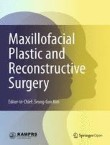Temporomandibular joint disorder from skull-base osteomyelitis: a case report
Skull-base osteomyelitis is a rare disease affecting the medulla of the temporal, sphenoid, and occipital bones. In general, it occurs due to external ear canal infections caused by malignant external otitis. ...
